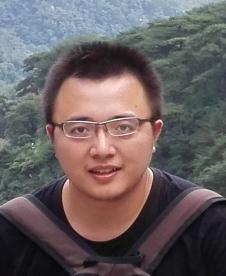Dual-Terahertz-Comb Spectrometer in CMOS: A Powerful Tool to Reveal the Invisible Secret in the Air
70 Vassar St
Cambridge, MA 02139
USA
Microwave Theory and Techniques Society
Rotation energy state of gaseous molecules provides an effective way to identify different chemical species with low ambiguity and high sensitivity. It also has high potential to serve as human-breath analyzer, industrial leakage monitor and spectroscopic imager. However, current rotational-mode spectrometers exhibit severe trade-off among resolution, speed and energy efficiency. Advanced CMOS process and circuit design technology is leading us to overcome these difficulties, and achieve low cost, robust and compact spectrometer in the near future. In this talk, implementation of a 220-to-320-GHz spectrometer consisting of a pair of 65-nm CMOS chips will be presented. It utilizes two counter-propagating frequency-comb signals to seamlessly scan the broadband spectrum and significantly reduces the total scanning time through high parallelism. The comb signal, with 10 equally-spaced frequency tones, is generated and detected by a chain of inter-locked transceivers on chip. The large reduction of required tuning range for each transceiver enables peak energy efficiency across a wide bandwidth. The spectrometer chip has a measured total radiated power of 5.2 mW and a measured single-sideband noise figure of 14.6~19.5 dB, representing the highest generated power and sensitivity of silicon-based THz circuits. Absorption spectrum of acetonitrile (CH3CN) are obtained, which agrees well with the JPL spectroscopy database.
Cheng Wang was born in Suining, Si Chuan, China, on March 8, 1987. He received his B.S. degree in engineering physics from Tsinghua University, Beijing, China, in 2008 and his M.S. degree in radio physics from China Academy of Engineering Physics, Mianyang, China, in 2011. He joined the Institute of Electronic Engineering, Mianyang, China, as an assistant research fellow from 2011 to 2015.
Currently, he is pursuing his Ph.D. degree at the Department of Electrical Engineering and Computer Science (EECS), Massachusetts Institute of Technology (MIT), under the supervision of Professor Ruonan Han. In 2016, he received the Analog Device Inc. Outstanding Student Designer Award. In 2017, he received the IEEE Microwave Theory and Techniques Society Boston Chapter Scholarship. His research covers topics of millimeter/terahertz-wave gas spectroscopy, high-precision clock generation, broadband communication and radar imaging.
Meeting Location: MIT, 37-252, 70 Vassar Street, Cambridge, MA

